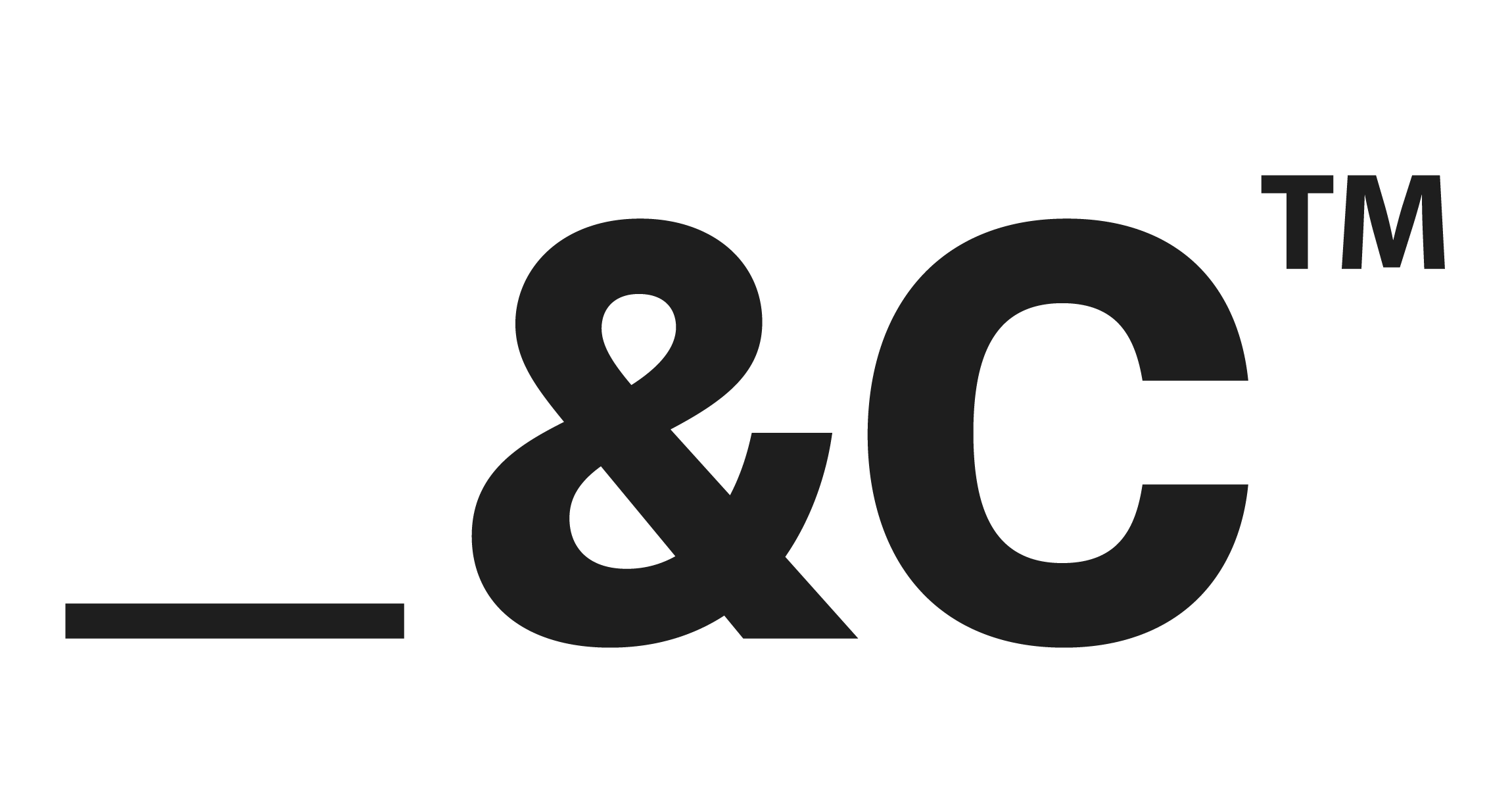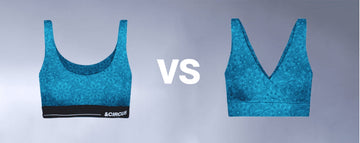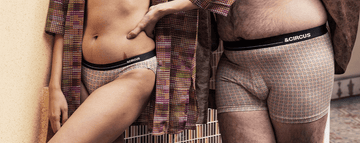Quick Listen:
The underwear drawer, once a predictable realm of cotton and polyester, is undergoing a quiet revolution. Shoppers, from new mothers to eco-conscious millennials, are reaching for innerwear made from organic cotton, bamboo, and a lesser-known star: micromodal. This silky, plant-based fiber, derived from beech trees, is soft as a whisper and biodegradable to boot. But it's not just about comfort. It's about a growing demand for clothing that feels good on the skin and aligns with a planet-first ethos. As sustainable fabrics edge into the mainstream, they're reshaping how we think about our most intimate apparel.
Uncomfortable underwear shouldn't steal your confidence. At Andcircus, we craft ultra-soft, sustainable Lenzing Modal Micro® innerwear for every body, XS to 5XL. From briefs to bras, our custom packs fit you perfectly. Shop risk-free with our 100% satisfaction guarantee and embrace comfort that includes everyone. #LoveEveryBody. Shop Now!
Organic Innerwear Materials Gain Ground in Mainstream Fashion Markets
Eco-conscious fabrics like micromodal, organic cotton, and bamboo are reshaping consumer expectations and competing directly with conventional textiles. The global organic food and beverages market, a bellwether for consumer interest in organic products, was valued at USD 231.52 billion in 2023 and is projected to reach USD 564.22 billion by 2030, growing at a compound annual growth rate (CAGR) of 13.9%. While food dominates the organic conversation, apparel especially innerwear is carving out its own slice of this eco-driven pie. Consumers are increasingly aware of what touches their skin, prioritizing fibers free from synthetic pesticides and harsh chemicals.
The shift isn't just a fad. According to the Organic Trade Association's 2025 Organic Market Report, U.S. sales of certified organic products hit $71.6 billion in 2024, with a growth rate of 5.2% more than double the overall market's 2.5%. Organic non-food products, including textiles, contributed $6.2 billion to that total. “When we look at the last two years, this is very good news,” says Tom Chapman, co-CEO of the Organic Trade Association. “Organic is growing more than twice as fast as the total market.” For innerwear, this translates to a surge in demand for materials like organic cotton and micromodal, which promise breathability, skin-friendliness, and a lighter environmental footprint.
The Rise of Eco-Conscious Fabrics
Walk into any major retailer, from Nordstrom to Target, and you'll spot sustainable options nudging out conventional ones. Micromodal, made from sustainably harvested beech trees, is a standout for its featherlight feel and biodegradability. Unlike polyester, which lingers in landfills for centuries, micromodal breaks down naturally. Organic cotton, grown without synthetic pesticides like glyphosate, is another favorite, especially for those with sensitive skin. Organic farming, which underpins these materials, emphasizes natural inputs like compost manure and biological pest control, shunning genetically modified organisms and synthetic fertilizers. The result? Fabrics that feel as good as they sound.
Millennials and Gen Z are the engine behind this trend. Raised on climate change headlines and social media exposés, they're skeptical of fast fashion's promises. They want transparency where was this fabric grown? Who made it? Was the process kind to the earth? Brands are listening. Retailers are expanding shelf space for organic options, and direct-to-consumer (D2C) platforms are thriving by telling authentic sustainability stories. The numbers back this up: in 2023, North America led the global organic food and beverage market with a 49.9% share, while Asia-Pacific is expected to grow at a blistering 18.1% CAGR through 2030, signaling a global appetite for all things organic.
Brands Leading the Charge
Smaller players like AndCircus are making waves in the innerwear space, particularly for maternity and everyday wear. Their micromodal-based collections prioritize softness and safety, appealing to new mothers who want irritation-free fabrics for themselves and their babies. Larger brands are following suit. Companies like Everlane and Pact have rolled out organic cotton lines, while luxury labels experiment with bamboo and micromodal blends. These brands aren't just selling clothes; they're selling a lifestyle one that aligns with health, wellness, and environmental stewardship.
Compare a micromodal bra to a polyester one, and the difference is stark. The former wicks moisture, breathes easily, and holds up through countless washes without pilling. Lifecycle analyses show sustainable fabrics often outlast their conventional counterparts, reducing the need for frequent replacements. Yet, it's not just about durability. D2C brands are leveraging marketplaces like Amazon and Etsy to reach wider audiences, blending convenience with eco-credibility. The hybrid model part online storefront, part marketplace presence is proving a winning formula for visibility.
Challenges on the Horizon
Going organic isn't all smooth sailing. Producing certified organic fabrics comes with a hefty price tag. Certifications, ethical sourcing, and small-batch production drive up costs, which can deter budget-conscious shoppers. Then there's the education gap. Many consumers confuse “natural” with “organic,” unaware that micromodal, while plant-based, requires rigorous certification to ensure sustainability. Scaling up production without compromising ethics is another hurdle. Supply chains are complex, and maintaining transparency from farm to factory is no small feat.
Fast fashion's greenwashing doesn't help. Some brands slap “eco-friendly” labels on products with dubious credentials, muddying the waters for consumers. “There's a trust issue,” notes one industry insider. “Shoppers want to believe in organic, but they're wary of being duped.” Overcoming this requires brands to double down on traceability and third-party certifications, like GOTS (Global Organic Textile Standard), which verify sustainable practices.
Opportunities for Growth
Despite the challenges, the opportunities are immense. Innerwear, especially for maternity and postpartum wear, is a high-trust category. Shoppers in these markets prioritize safety and comfort, making them prime candidates for organic fabrics. Brands that lean into transparency sharing sourcing details or carbon footprint data can stand out in a crowded market. Reduced returns due to skin irritation or poor fit also translate to cost savings for retailers. And then there's the power of storytelling. Social media platforms like Instagram and TikTok are goldmines for brands that can weave compelling narratives about sustainability, turning eco-conscious shoppers into loyal advocates.
The upcycled beauty movement offers a parallel lesson. Companies like Kaffe Bueno, which transforms coffee grounds into skincare ingredients, show how innovative upcycling can capture consumer imagination. Innerwear brands could borrow this playbook, experimenting with novel fibers or waste-reducing processes to appeal to eco-curious buyers.
A Sustainable Future for Innerwear
The future of organic innerwear looks bright, if not without growing pains. Experts predict a rise in micromodal-mix blends, combining the best of organic cotton, bamboo, and beech-derived fibers. Localized supply chains, which cut down on transportation emissions, are also gaining traction. For emerging brands, the path forward is clear: invest in traceability, secure credible certifications, and educate consumers through engaging content. “The organic market is about trust,” says Chapman of the Organic Trade Association. “Show consumers you're walking the talk, and they'll follow.”
As you slip into a pair of micromodal briefs or an organic cotton bra, you're not just choosing comfort. You're voting for a world where fashion doesn't come at the planet's expense. It's a small choice, but in the aggregate, it's seismic. The underwear drawer, it turns out, might just be where the next green revolution begins.
Frequently Asked Questions
Why are organic materials gaining popularity in mainstream fashion markets?
Organic materials are becoming more popular due to growing consumer demand for sustainable, skin-friendly, and environmentally responsible fashion choices. They offer comfort and reduce chemical exposure, making them appealing for both everyday wear and premium apparel segments.
How do organic fabrics compare to conventional textiles in terms of performance and comfort?
Organic fabrics like organic cotton and bamboo blends offer comparable durability and breathability to synthetic alternatives, while also being softer and more suitable for sensitive skin. Advancements in processing have improved their texture, color retention, and moisture management.
Are brands offering a wide range of organic innerwear and casualwear?
Yes, many brands now offer diverse organic collections, including bras, panties, loungewear, and basics. These products meet consumer preferences for comfort and eco-consciousness, while also aligning with inclusive sizing and gender-neutral design trends.
Disclaimer: The above helpful resources content contains personal opinions and experiences. The information provided is for general knowledge and does not constitute professional advice.
You may also be interested in: Why Eco-Friendly Underwear Is Gaining Momentum Among Urban
Uncomfortable underwear shouldn't steal your confidence. At Andcircus, we craft ultra-soft, sustainable Lenzing Modal Micro® innerwear for every body, XS to 5XL. From briefs to bras, our custom packs fit you perfectly. Shop risk-free with our 100% satisfaction guarantee and embrace comfort that includes everyone. #LoveEveryBody. Shop Now!


















































